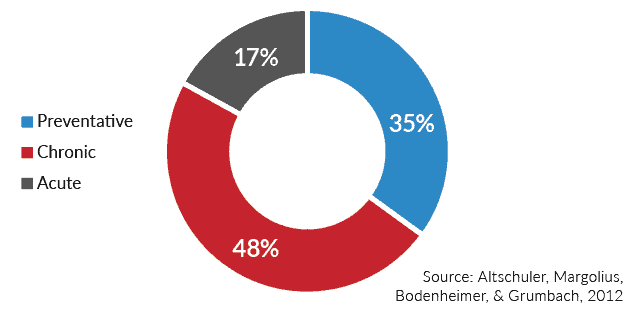New technologies making care more accessible by digitally transforming the “front door”
As part of our efforts to assist with the response to COVID-19, we are offering this report for free for the foreseeable future. Please follow this link to request your copy.
To accompany the release of this report, lead author Alex Lennox-Miller hosted a webinar presenting and discussing the report’s key findings — watch now.
Primary care is the most common touchpoint in medicine, and yet increasing patient demand, expanding provider responsibilities and evolving payment models threaten the sustainability of this essential element of the healthcare system. New technological approaches to the “front door” access point combined with the drive to move care to lower cost settings are enabling new models that better meet patient needs and still allow providers to maintain a longitudinal relationship and central role in defining patient care.
This latest report from Chilmark Research, Primary Care for the 21st Century: Technology-Enabled and On Demand, examines three new types of solutions that contribute to or complement the modern technology-enabled primary care practice by serving as the digital front door:
- Telehealth
- Virtual and Remote Care Platforms (including behavioral health)
- AI-Enabled Assistants, Symptom Checkers and Chatbots
These new methods of delivering technology-enabled primary care offer novel ways for patients to access care directly, for providers to gain greater visibility into the patient’s life and experience, and for both sides of the care loop to communicate. If primary care barriers to access, burden, and costs are not addressed, patients will continue to move towards solutions that offer convenience but do not help with long-term care and needs, such as retail and urgent health clinics. These technology solutions offer ways to not just improve care, but to support value-based payment models that will soon be the norm.
Each type of solution (Telehealth; Virtual & Remote Care Platforms; and AI-Enabled Assistants, Symptom Checkers and Chatbots) is evaluated based how it affects barriers to access, burden, and costs for both providers and patients. The report provides important information about use cases, subcategories of product offerings, reimbursement options, and other obstacles to adoption for each type of solution.
In addition to the categorical analyses, the report includes 11 short profiles of major and promising vendors, with three to four vendors identified per solution type. Each profile includes product differentiators and vendor-specific impact on access, burden, and costs.
Vendors Profiled: Ada Health, Aiva Health, American Well, Bright.MD, Cerner, Epic, Medocity, NeuroFlow, Orion Health, Phillips, SilverCloud Health
Cost: Free!
Request copy below:






0 Comments